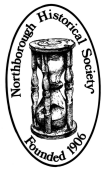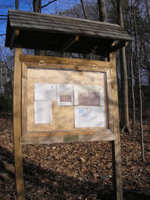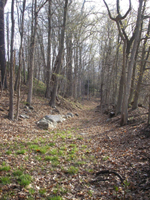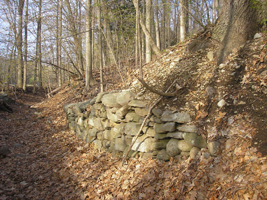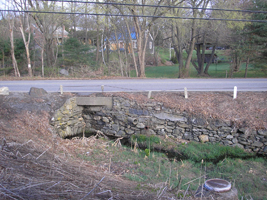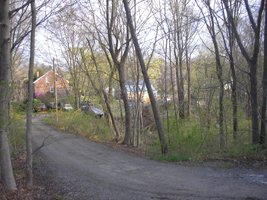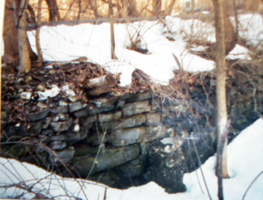A Walk Along the Chapin Canal
By Robert Ellis, former NHS Historian
If you drive out Hudson Street past Residence at the Falls and a few houses and then turn right and then slowly down a passage to the parking lot for the Coyote Trail, you may, if you are agile, walk the trail, or if not, you can explore a canal almost 200 years old which served an industry that prevailed in Northborough for nearly a century. Not far from the street you will see a sign describing this canal, which was built as a "race" or "sluice" to take from the Assabet River water, the power source of mills in the nineteenth century.
A few years back the canal bed was almost impassible, but the many fallen trees, bushes, and other impediments have been removed, and now you can walk the path, parallel to and below the level of Hudson Street, quite easily. About 1820 Amory Barnard built the canal or, most likely a group of men with picks and shovels helped him build it - quite a bit of work to power his grist mill.
In 1832 three Davis brothers (the older brothers of the future United States Senator and Massachusetts governor John Davis) purchased 22 acres including the canal and the rights to enlarge the path for the water from the river. Along the way you can see, here and there, portions of the rock wall along the sides of the canal. You can imagine what it must have looked like once. Near the end the canal bends left towards Hudson Street. Here, unfortunately, your passage is blocked by what seems to me a completely unnecessary fence because your destination, the pumping station of the Northborough sewers, is approachable from the road if you don't care to circumvent the fence, which extends up the banks of the canal on both sides.
From the little eminence where the pumping station stands you can see an important Northborough industrial site. Until 1859 Isaac Davis operated a cotton factory across Hudson Street in a brick structure built by Samuel Wood, who also built the three brick houses, still in use on Chapin Court. His son Albert was born in one of them in 1833; he went on to become a surgeon in the Civil War and an eminent physician in Worcester thereafter. In 1864 Caleb Chapin bought the mill, and in 1869 it burned. He then replaced it with a new building in which his workers made fabrics from shoddy (reprocessed wool). If we cross the street we can see a depression, the mill site to the right of Chapin Court and the three houses beyond.
In 2005 your historian took a picture of part of a foundation wall of the Chapin factory. It offers a better view than you can get today. In this mill up to 25,000 yards of material per week could be produced. Caleb Chapin and then his son Ezra operated the mill for 45 years. It passed to another owner at Ezra's death in 1909, and in 1918 it burned.
If you re-cross the street to your previous perch to say goodbye, you can see the canal to your left, the entrance passage to the mill site under the road, and, to your right, the exit passage through which the water flowed back to the river bed. It is just a level swampy area today, but probably in the days of the mill, the water formed a passage back to the river. Probably no one alive today can remember the mill, but the Historical Society has several pictures of it. We can, however, walk the canal, view Chapin Court and the three houses,and stare at the largely tree-covered site what was once one of the busiest places in Northborough—or Chapinville, as the area was called. You can still see the business section of the Chapinville Post Office, by the way, in the southeast corner of our museum.

